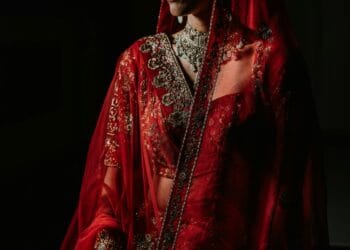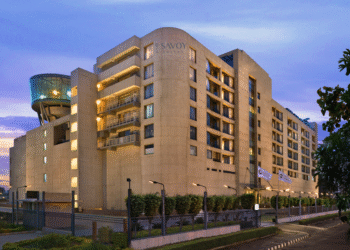For decades, the Indian bridal industry has been synonymous with opulent lehengas, intricate embroidery, and deep-rooted traditions. But in 2025, the industry is witnessing a radical shift, driven by empowered brides, a globalised aesthetic, and evolving cultural norms, says Jyoti Verma.
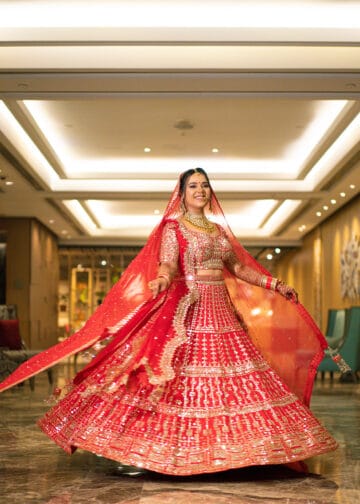
Bridal fashion in 2025 is not just about following trends; it’s about what speaks to you, who you are, and what your individual story is. Whether you love the timeless elegance of Indian culture, the modern drama of veils, or the regal touch of a double dupatta, these wedding dress trends will win the spotlight on your special day.
At her wedding, badminton champion PV Sindhu wore a champagne-gold Manish Malhotra saree and a crimson red lehenga by ace designer Sabyasachi Mukherjee for her Varmala. The Olympian tied the knot in an intimate and breathtaking ceremony on a private island in Udaipur in December 2024. The picturesque location set the perfect backdrop for her iridescent gold ensemble with subtle ivory undertones. The saree featured intricate gold zari work, luxurious gotta-patti, and layers of polki.
Renowned designer Sabyasachi takes pride in being part of such iconic Indian weddings with his timeless fashion. “For 25 years, we have designed heritage bridal ensembles for our South Asian customers worldwide. Seeing the surge of multicultural diaspora weddings, we bring a new inclusive language to Indian couture that introduces the joys of our textiles, crafts, and design to the world,” says the designer.
However, he now sees a shift in the industry, with brides becoming financially independent, career-driven, and assertive about their choices, including their wedding attire. At his grand 25th-anniversary celebration in Mumbai in January 2025, guests were left perplexed—no bridal outfits in sight. India’s most celebrated bridal designer had chosen not to showcase a single lehenga, signalling a deeper transformation. As he boldly stated in an interview, “The marriage market is going to collapse.” He cited Kolkata clients lamenting that their Yale- and Princeton-educated daughters refuse to marry. “Knowledge is a one-way street,” he added. “You can’t give them freedom and then expect them to return to marriage as a business transaction.”
The Rise of Functional Elegance
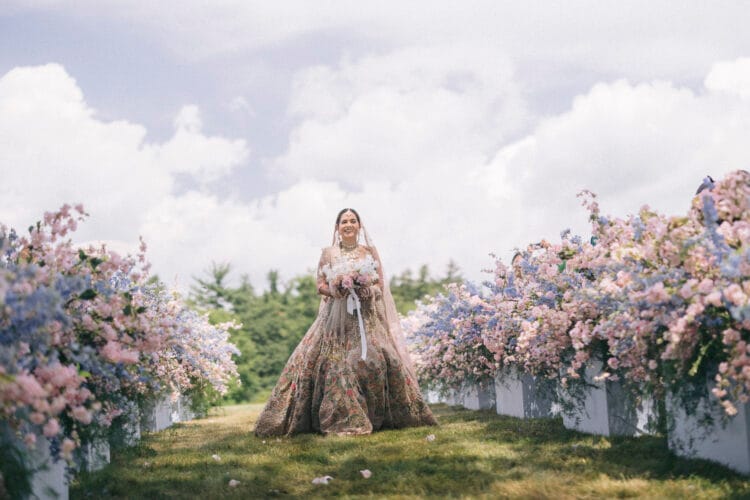
This shift in ideology is also reflected in today’s bridal ensembles. Indian bridal wear is no longer just about extravagance; it’s about versatility. Actress Alia Bhatt set a new precedent when she chose a simple ivory sari for her intimate wedding, breaking away from the grandeur traditionally associated with Bollywood weddings. She later re-wore this sari to the National Film Awards 2023, making a bold statement in sustainable fashion and inspiring a new trend. Brides today are prioritising investment pieces over one-time wear ensembles, and the sari is at the forefront—celebrated for its elegance, timeless appeal, and reusability.
Couture jackets, a rising trend, offer brides a stylish and adaptable alternative—pairable with saris, skirts, and even jeans for post-wedding versatility. Ornate jackets inspired by architectural motifs, accentuated with sequins, kundan, and metallic gota embroidery, and paired with a velvet dress are part of Tarun Tahiliani’s latest bridal collection.
While architectural artwork inspires Tahiliani, Masaba Gupta draws from Old Delhi in her latest bridal collection. Her collection, featuring 100 pieces for both men and women, is inspired by the tradition, charm, and luxury of the havelis that once dotted Old Delhi and India’s diverse sweets, including Kalakand, Ghewar, Pista Kulfi, and Imarti. “House of Masaba has always celebrated colour and culture,” she explains. “This collection, our largest bridal offering yet, is a tribute to Purani Dilli—a place of great inspiration. We’ve incorporated baadla kaam, peeta kaam, and nakshi kaam into modern silhouettes that cater not just to brides but to grooms and their families too.”
The Statement-Making Details of 2025
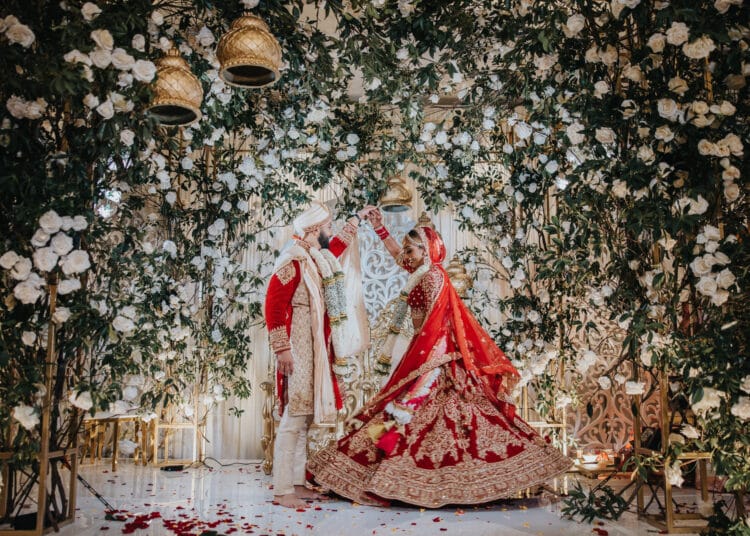
Wedding fashion in 2025 is not just about changing silhouettes but also about intricate detailing that adds depth to every ensemble. Designer Manish Malhotra predicts, “For 2025, corset saris and lehengas with a contemporary twist will undoubtedly be at the forefront of bridal fashion. Capes, instead of dupattas, are emerging as a luxurious statement, providing a regal sensibility to the ensemble.”
From whispering veils embroidered with floral motifs to structured corsets that blend tradition with modernity, bridal fashion is witnessing an influx of rich textures and bold embellishments. A statement accessory, veils have become longer, and more detailed and opulent. Often these long veils with fine lace edges, beaded decorations, or floral embroidery tell a story. Sindhu’s Manish Malhotra veil was all about personal touches. Featuring zari borders with her and her groom’s names delicately embroidered, the long trail added a regal charm to her ivory bridal saree.
Designer corsets are a top choice for brides seeking sculpted silhouettes. Adorned with intricate embroidery, pearl embellishments, or lace detailing, these corsets pair beautifully with lehengas, dresses, and saree blouses.
Statement backs and double dupattas are also defining bridal fashion in 2025. Bridal lehengas and sarees now feature bold cutouts, elaborate embroidery, and shimmering crystals, adding a personalised touch. The double dupatta trend continues to gain momentum, with one dupatta traditionally styled on the head, while the second, in a contrasting shade, drapes over the shoulders for added texture, depth, and drama. Velvet and organza dupattas with intricate detailing further enhance the bridal ensemble. A striking example is the regal Sabyasachi lehenga worn by Diva Shah, daughter-in-law of Indian billionaire businessman Gautam Adani. Her wedding look featured a maroon-hued velvet dupatta elegantly draped over her shoulder like a shawl, complemented by a sheer red dupatta pinned over her head, creating a timeless yet modern bridal statement.
While sarees have long symbolised grace and tradition, 2025 brides are adding a contemporary edge with waist belts, blending functionality with fashion. These belts provide a defined, structured silhouette, enhancing the overall bridal look. Available in gold, silver, or vibrant multi-tone designs, they complement everything from classic Banarasi weaves to modern georgette pre-draped sarees. Another ongoing trend is floral motifs, now seamlessly incorporated into diverse styles such as 3D appliqué, intricate embroidery, and hand-painted designs.
As Indian bridal fashion steps into 2025, it beautifully balances heritage with modernity. From timeless weaves and statement-making corsets to sustainable choices and personalised embellishments, today’s brides are rewriting the rules. Bridal wear is no longer just about grandeur—it’s about individuality, comfort, and self-expression. Whether embracing a minimalist aesthetic or indulging in opulent couture, the modern bride’s trousseau is a reflection of her personality, making every wedding ensemble a unique celebration of love and style.

